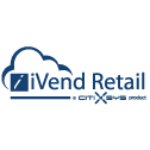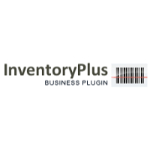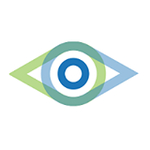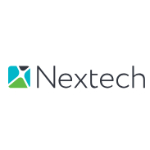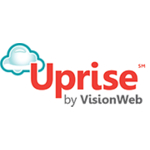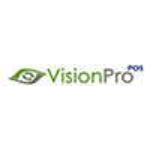TechnologyCounter provides genuine, unbiased real user reviews to help buyers make informed decisions. We may earn a referral fee when you purchase through our links, at no extra cost to you.
List of Best Optical Shop Software
Showing 1 - 9 of 9 productsBigdbiz Optical Management is a all-in-one solution for optical businesses. Streamline your operations, boost productivity, and enhance customer experience with our innovative software. Let Bigdbiz handle your daily tasks so you can focus on growing...Read Bigdbiz Optical Management Reviews
iVend Retail is a leading retail management software that streamlines and optimizes every aspect of your business, from inventory and sales to customer management and reporting. With its user-friendly interface and robust features, iVend Retail is a...Read iVend Retail Reviews
InventoryPlus, a powerful inventory management software designed to streamline and organize your business operations. With its user-friendly interface features, InventoryPlus helps you track and manage your inventory effortlessly, saving you time and...Read InventoryPlus Reviews
EyeMD EMR is a electronic medical records software designed specifically for ophthalmologists. Streamline your practice with this user-friendly system that enhances efficiency, simplifies documentation, and improves patient care. Say goodbye to cumbe...Read EyeMD EMR Reviews
MedFlow EHR is a essential tool for modern healthcare providers. With its intuitive design features, MedFlow streamlines workflows, enhances patient care, and improves efficiency. Its time to take your practice to the next level with MedFlow EHR...Read MedFlow EHR Reviews
Nextech is a software revolutionizing the way businesses operate. With its advanced technology and innovative features, Nextech offers companies a seamless is a solution for all their operational needs. From managing projects to tracking inventory, N...Read Nextech Reviews
Ocuco is a leading software company providing innovative solutions to the eye care industry. With a focus on improving efficiency and enhancing patient care, Ocuco offers a range of highly functional software designed specifically for opticians, opto...Read Ocuco Reviews
Uprise is a software designed to elevate and optimize your online presence. From efficient project management to effective data analysis, Uprise empowers businesses to reach new heights of success. Its user-friendly interface features make it a must-...Read Uprise Reviews
Visionpro POS, the ultimate retail solution designed to streamline your business operations and enhance the customer experience. With its user-friendly interface and extensive features, Visionpro POS is the game-changing POS software you need to take...Read Visionpro POS Reviews
- What Is Optical Shop Software?
- Top Reasons Why Businesses Need Optical Shop Software?
- What Are the Top Key Features of Optical Shop Software?
- What Are the Top Benefits of Optical Shop Software?
- What Are the Steps to Choose the Right Optical Shop Software?
- What Are the Types of Optical Shop Software for Different Industries?
- What Are the Technology Trends for Best Optical Shop Software?
- What Are the Deployment Options for Optical Shop Software?
What Is Optical Shop Software?
Optical shop software refers to a computer application designed to effectively store and administer data pertaining to a customer's eyeglasses, contact lenses, sunglasses, and other optical materials. This particular tool is commonly employed by professionals in the field of optometry, including optometrists, opticians, and optical stores.
The storage of client records, lens prescriptions, glasses frames, and inventory information is beneficial for the efficient management of a retail optical shop. The system is utilized for the purpose of effectively managing many aspects of an optical store, including patient appointment information, prescriptions, product inventory, billing, and other associated tasks.
The optical store software commonly includes an inventory system for in-store operations, a scheduling system for patient appointments, a database for customer information, functionality for product selection, pricing features, and several payment mechanisms.
Additionally, optical shop management system facilitates the monitoring of order statuses, encompassing the procurement and transportation of lenses, frames, and other optical merchandise. Moreover, the system maintains a comprehensive record of the customer's historical data, encompassing their past purchases, alterations in prescriptions, and any other pertinent information, ensuring convenient accessibility for future reference.
The utilization of software can enhance the organizational capabilities of shop workers, enabling them to effectively provide to consumers by streamlining the management of orders and invoices. This enables organizations to enhance their customer service experience and optimize their financial gains.
Ultimately, this program has been specifically developed to effectively save and manage records and data pertaining to the shop, thereby offering an enhanced means of monitoring the firm and its sales performance across a duration of time.
Top Reasons Why Businesses Need Optical Shop Software?
1. Automated billing and invoicing: The implementation of optical shop software has the potential to automate billing and invoicing tasks, resulting in a more efficient process and a decrease in errors that are commonly connected with manual data entry.
2. Inventory management: The optical store software possesses the capability to monitor and manage inventory and stock levels, so enabling firms to optimize their profitability and minimize wastage.
3. Integration with other third-party applications: The integration of optical shop management systems with widely used programs like accounting and sales platforms has the potential to enhance efficiency by automating processes and eliminating the need for manual data entry.
4. Comprehensive customer management: The software offers a consolidated platform for the storage, analysis, and monitoring of client data. This can facilitate organizations in gaining a deeper comprehension of their clients and implementing more efficient marketing strategies.
5. Automated ordering and customer service processes: The implementation of optical store software facilitates the automation of customer service and order fulfillment operations, allowing businesses to allocate their time and resources more efficiently.
6. Complete sales cycle tracking: In addition to the function of capturing and monitoring client data, optical shop software possesses the capability to track the complete sales cycle, encompassing the stages of order placement, payment processing, and solicitation of customer feedback.
7. Point of sale and financial reporting: The utilization of optical shop software enables firms to generate comprehensive reports that facilitate the monitoring of sales, financial data, and overall performance.
8. Data mining and analytics: The utilization of optical shop software facilitates organizations in gaining enhanced comprehension of consumer behavior and trends through the systematic collection and analysis of client data.
9. Promotional tools: The utilization of optical shop software facilitates firms in the development of focused promotional campaigns and offerings.
10. Employee management: Organizations can utilize software applications to effectively manage and remunerate their workforce, alongside monitoring attendance and productivity levels.
11. Contact lens order tracking: The utilization of optical shop software enables the storage and monitoring of contact lens orders, encompassing pertinent details such as prescription and insurance information, so facilitating the automation of this particular procedure.
12. Customer communication tools: The utilization of optical store software enables the facilitation of communication among customers, personnel, and suppliers.
13. Automated scheduling: Optical shop software can be employed by businesses to automate the tasks of appointment setting and scheduling, guaranteeing precision throughout the entirety of the process.
14. Inventory ordering: The utilization of optical shop software facilitates the optimization of business operations by streamlining the process of goods procurement from suppliers, while also providing the functionality to effectively monitor and manage receipts and returns.
15. Advanced search functionality: The utilization of an optical shop management system provides organizations with enhanced search capabilities, facilitating efficient retrieval of client data within a certain timeframe.
What Are the Top Key Features of Optical Shop Software?
The top key features of optical shop software include:
1. Inventory Management: An effective inventory management system facilitates the monitoring of orders and stock levels, enabling retailers to stay informed about the availability of products in their stores.
2. Point-of-Sale (POS): A highly effective point-of-sale (POS) system designed to facilitate swift and convenient consumer transactions for the purchase of various products and items.
3. Customer Relationship Management (CRM): A robust and all-encompassing CRM system designed to effectively oversee and organize customer interactions and pertinent customer information.
4. Automated Email Notifications: Automated electronic correspondences are dispatched to consumers to remind them about impending appointments, disseminate information regarding exclusive specials, and convey other pertinent alerts.
5. Reporting and Analytics: The reporting options provided are robust, enabling store owners and workers to have a deeper understanding of their sales activities and client involvement.
6. Vendor Relationship Management: This platform offers a dependable and robust solution for effectively managing suppliers and maintaining comprehensive records of their orders, invoices, and other pertinent data associated with vendor relationships.
7. Automation: Automation solutions are utilized to enhance efficiency and optimize various operational procedures, including order fulfillment, store replenishment, and customer support answers.
8. Payment Processing: Credit card processing and other payment processing tools facilitate the convenient collection of payments from clients.
What Are the Top Benefits of Optical Shop Software?
The top benefits of optical shop software are:
1. Improved efficiency: The implementation of optical shop software facilitates the automation and optimization of manual operations, including order processing and inventory management. This technological solution enables optical shops to enhance their efficiency and precision in promptly catering to clients' needs.
2. Enhanced customer experience: The utilization of an optical shop management system facilitates a personalized customer experience through the systematic monitoring of customer records and the provision of up-to-date information on stock availability.
3. Increased sales: The utilization of optical store software facilitates the process for clients to efficiently locate and acquire the desired products. This strategy contributes to the augmentation of sales and profitability.
4. Increased accuracy: The utilization of optical shop software mitigates the potential for errors arising from the manual input of data.
5. Lower operational costs: The implementation of automated procedures and the provision of real-time access to customer and inventory data have the potential to mitigate the necessity for manual labor, hence leading to a reduction in operating expenses.
6. Secure data storage: The best optical shop software effectively and securely maintains customer and inventory data, ensuring its reliability.
7. Better tracking: The utilization of optical store software facilitates the streamlined monitoring of orders, sales, revenues, inventory, and customer database. Ensuring accurate and timely delivery of products and services is facilitated by this practice.
What Are the Steps to Choose the Right Optical Shop Software?
1. Research software options: Before selecting an appropriate optical shop software, it is advisable to dedicate sufficient time to conducting thorough research on the diverse range of software solutions that are now accessible in the market.
Examine the various features and capabilities provided by each option, and do a comparative analysis of the specific requirements of your optical shop.
2. Consider automation: The varying levels of automation provided by different optical shop software solutions should be taken into consideration. The implementation of automation technology is expected to enhance operational efficiency, minimize expenses, and optimize workflow inside the shop.
3. Evaluate pricing structures: This analysis entails a comparison of the several pricing options provided by the best optical shop software vendors, to identify the most suitable plan that aligns with both the budgetary constraints and operational requirements of your store.
4. Assess customer service: Examine the range of services provided by each provider to facilitate the process of software setup, integration, and maintenance. Choose a service provider that provides an exceptional customer service experience.
5. Research customer reviews: The best optical shop software is advisable to allocate sufficient time to peruse customer reviews about the product under consideration. This approach will offer an impartial viewpoint regarding the quality of customer service and the efficacy of the program.
6. Test the software: After the process of narrowing down the selection of software providers, it is advisable to proceed by requesting a complimentary trial or demonstration of the product.
Conduct a comprehensive evaluation of the software's features and functionalities to ascertain its compatibility with the specific requirements of your shop.
7. Choose the solution: Once a thorough evaluation of the available possibilities has been conducted and the software has been rigorously tested, an informed conclusion can be made regarding the most suitable optical shop software for your establishment.
What Are the Types of Optical Shop Software for Different Industries?
Optical shop software can vary depending on the industry it is being used for. Generally, there are three primary types of optical shop software:
1. Retail Management Systems: This particular program is specifically developed to streamline the process of selling optical products, encompassing lens prescriptions, frames, and contact lenses. This software enables businesses to effectively monitor inventory, efficiently manage customer data, facilitate payment processing, and perform additional functions.
2. Prescription Management Systems: This program facilitates the management of patient data, insurance documentation, and prescription orders for optometrists. Additionally, this software enables users to generate reports and bills about prescription orders.
3. Manufacturing Management Systems: This program is specifically developed to streamline the procedures involved in the creation, design, and production of optical lenses, frames, contact lenses, and other optical apparatus.
This system enables organizations to effectively manage manufacturing materials and supplies, facilitate work requests, and oversee inventory levels.
What Are the Technology Trends for Best Optical Shop Software?
The current technology advances in the field of optical shop software encompass the utilization of cloud-based software, artificial intelligence (AI), big data, and the Internet of Things (IoT).
Cloud-based software enables users to conveniently access software applications from any location, provided they have a secure internet connection, eliminating the need for local installation on their computers.
Artificial intelligence (AI) has the potential to be employed to analyze customer data and enhance in-store experiences. The utilization of big data enables the creation of tailored client profiles, hence enhancing the ability to effectively target existing customers.
Ultimately, the Internet of Things (IoT) system has the potential to facilitate the integration of optical shop software with inventory systems, hence enhancing the efficacy of inventory management.
What Are the Deployment Options for Optical Shop Software?
There are several deployment options for optical shop software.
1. Cloud-based: The deployment of optical shop software in the cloud can be implemented in either a public or private cloud setting. The aforementioned deployment model enables remote access and management of the optical shop management system from any location with an internet connection.
This obviates the necessity for further hardware and affords convenience in terms of scalability.
2. On-premise: The optical shop software can be deployed and installed on the customer's current hardware infrastructure at their designated location. This particular choice provides the highest level of security and control, albeit at a greater cost due to the requirement of additional hardware and/or software licenses.
3. Hybrid: This deployment paradigm integrates both cloud-based and on-premise solutions. This approach offers consumers the advantages of both approaches, ensuring optimal scalability and security.
Irrespective of the chosen deployment technique, it is important to possess a comprehensive comprehension of the programs and services offered by the vendor, along with their approach towards managing customer data.
Taking into account all of these factors will contribute to guaranteeing the most optimal software solution for your optical company.

